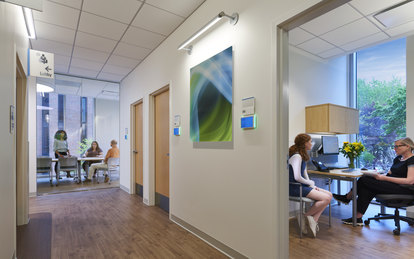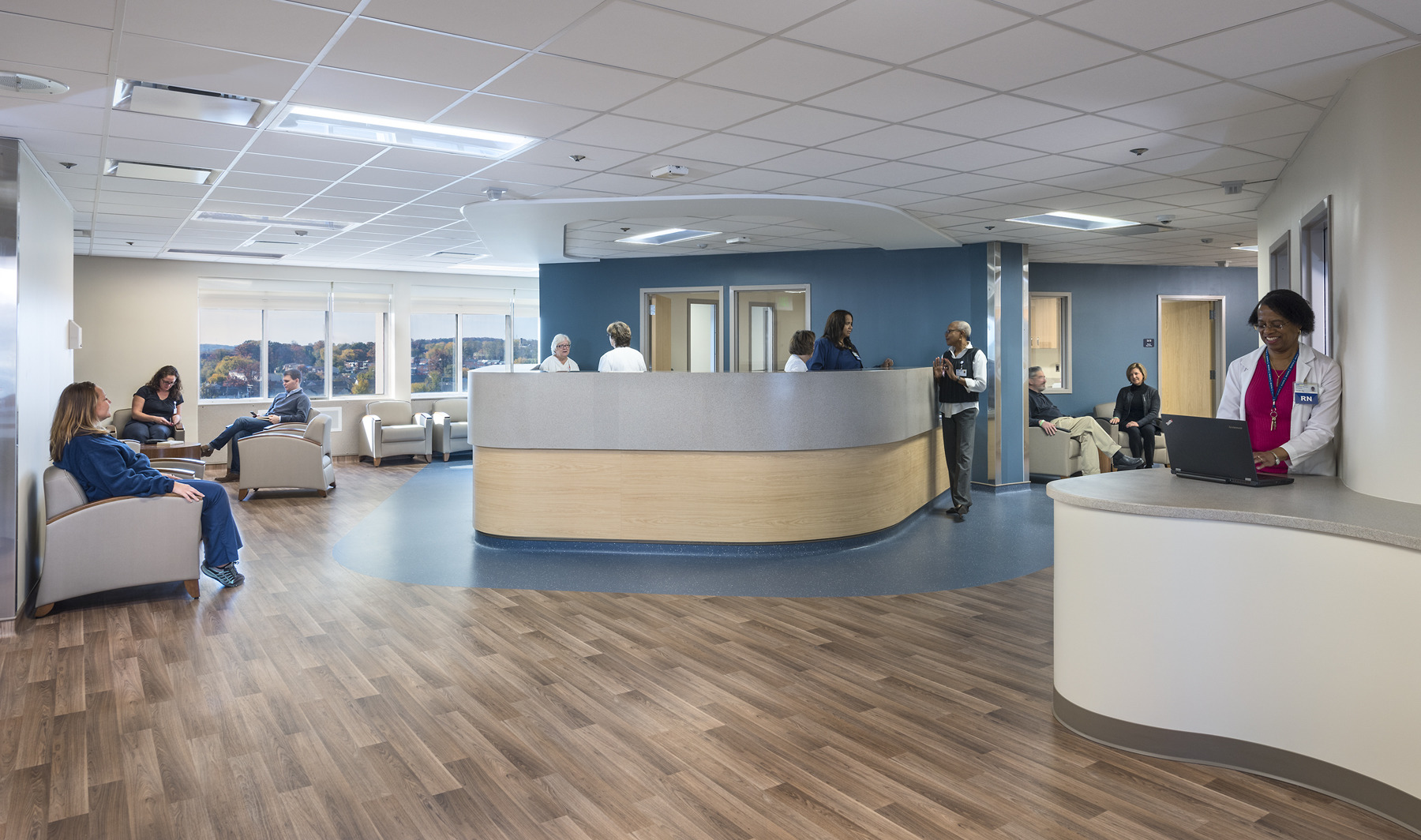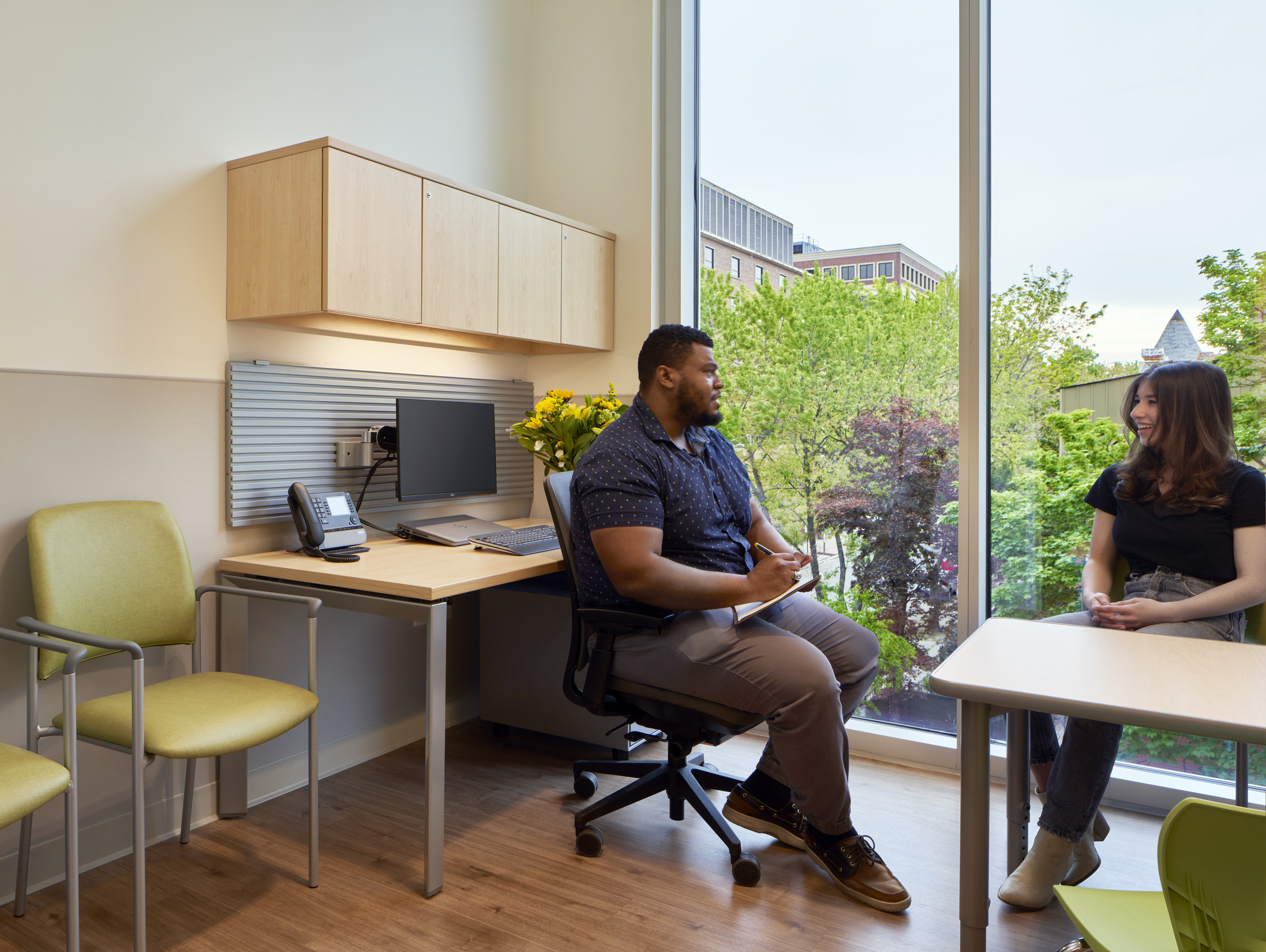Designing for Wellness: Key Trends in Behavioral Health Environments

Human connection is the cornerstone of joy and healing. Our Health planners and designers are dedicated to fostering these connections among patients, residents, healthcare providers, and families. This philosophy extends to our designs for mental health environments, where we create spaces that are not only functional but warm, supportive, and promote wellbeing.
In recent years, we have seen a substantial global increase in mental health issues. Factors such as increased stress, social isolation, and the chaotic pace of modern life have contributed to a growing number of individuals experiencing conditions like anxiety, depression, and other mental health disorders. In the United States alone, the National Institute of Mental Health estimates that more than one in five adults (57.8 million people) live with a mental illness, and almost half of U.S. adults (46%) will experience a mental health condition at some point in their lives. This surge has brought mental health to the forefront of public health discussions, highlighting the urgent need for effective and accessible mental healthcare.
This increasing awareness and openness about mental health challenges have spurred significant advancements in the field, driving innovation in how we design and implement behavioral health spaces.
We sat down for a conversation with Senior Principal and Health Studio Leader Cindy Beckham to discuss the key trends in behavioral health environments.
Let’s start by talking about a project that stands out to you as a game-changer in healthcare design innovation, specifically in the behavioral health field.
SmithGroup was recently selected to design a new Whole Health Campus, which is one of the most exciting emerging trends I’m monitoring lately. The Whole Health concept connects mental and acute care in one facility and on one campus. The Whole Health design approach supports the concept of body and mind care to occur in a holistic environment.
Our firm is excited about this because we can bring our integrated team of operational strategists, landscape architects, campus planners, technologists, architects, and interior designers to develop designs—from the inside out and outside in—that address all issues of accessibility, wayfinding, privacy, dignity, safety and healing. The resulting design concepts have the potential to help us reinvent how all healthcare campuses are designed to heal patients holistically. This model will go far in normalizing mental health and making it a routine part of healthcare practice. We look forward to collaborating with designers across the country to develop ‘whole health’ equipment, furnishings and technology that enables whole health to be a standard of the future.
As the healthcare landscape evolves, how do you incorporate behavioral health design in traditional areas such as hospitals, emergency rooms and long-term care facilities?
Our firm continues to provide creative solutions for numerous clients looking to address behavioral health capacity within their emergency departments and inpatient care units. Our strategy is to look for appropriate healing space for these patients rather than just expanding into available space. It is important to think of crisis and behavioral health units not as holding stations but as healing stations where progressive improvement can take place.
Integration is essential, specifically regarding the Whole Health Campus concept, as operations combine the medical and mental care approach for all patients, from the point of entry to parking to inpatient and clinical care. This particular site is designed to be a lush, green, invigorating, and familiar community asset, inviting neighbors to interact with the care facility, removing the stigma and relieving anxiety about going to a hospital campus. Care destinations are connected in a shared facility, blurring the lines between mental and physical care, supported by a cross-trained staff and special attention to safety and code requirements. We are excited by the potential of this model to serve as a community care center for mind, body and spirit.
As we look ahead, what are 2-3 emerging trends in behavioral health design/construction that impact how SmithGroup approaches behavioral health projects?
The biggest trend is that behavioral healthcare is now recognized and starting to be supported as a need that positively impacts our communities. Until that hurdle was crossed, there was no incentive to proactively address mental health issues.
Another trend is incorporating empathy into behavioral care treatment and pathways. Patient needs are being addressed more holistically, first by discovering the issue creating a crisis and then developing pathways that effectively help them develop the skills that support them through future events. These pathways are physically manifested as distributed systems for care throughout communities, placing help within reach of all patients. These settings include the following:
- Walk-in clinics: In essence, urgent care centers for immediately accessible mental healthcare distributed in local neighborhoods. These are small, approachable facilities and can successfully be integrated with amenities such as coffee shops or small, therapeutically focused retail.
- Virtual teletherapy at home: These services provide care for patients when they need it and wherever they might be. Again, this provides an immediate access point to get patients to the most effective pathway to address their care needs.
- One-stop shops with a focus on addressing mental health needs: Larger specialty facilities that provide a continuum of care for mental health and may include outpatient clinics, inpatient units, and residential treatment. This model is great for removing barriers to patients getting onto an appropriate pathway to treatment.
- Dedicated mental health suites and units in acute hospital settings: The trend is to make these locations more open than traditional institutional models. They are designed to encourage more meaningful interaction between patients and between patients and staff. We can accomplish this by creating more open areas with comfortable seating groupings, staff spaces incorporated into open seating areas, and sensory rooms with patient-controlled lighting, sound and even projected entertainment. Voice-activated controls enable patients to control their own environment without concerns about access to physical controls.
As we head into the end of 2024, what is your outlook for behavioral health design in the new year?
I anticipate seeing more organizations choosing to meaningfully investigate operational strategies to provide behavioral healthcare that promotes healing for the body and mind. This should include creating efficiency for all capacity-constrained departments impacted by behavioral health consumers. An example is cross-training that empowers staff to effectively guide patients through a crisis and confidently direct them to supportive care in appropriate settings. Our team is looking forward to supporting this critical new direction for behavioral health design.


